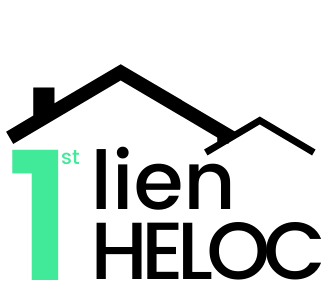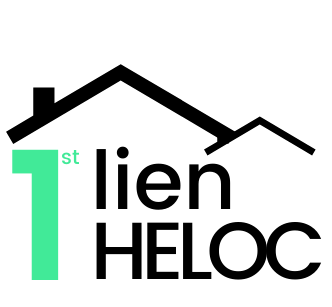How To Purchase A New Home Using A 1st Lien HELOC
Updated as of January 21, 2024 | FirstLienHELOC.com
Yes, you CAN purchase a home with a First Lien HELOC, here’s how.
Good to Know
Your credit score is a significant factor in any investment. The definition of a “good” credit score varies from lender to lender. However, scores in the high 680s-700s are a standard benchmark for borrowers looking to buy a house.
Raising your credit score before applying for a first lien HELOC may increase your chances of pre-approval.
Purchasing a primary residence is an exciting investment, but it takes some smart financial steps to get there. If you’re wondering how to buy a house, you’re not alone in looking for ways to finance your purchase. In fact, 87% of homebuyers financed the purchase of their house in 2020. Using a first lien HELOC can help you manage the financial commitment. First, you’ll need to get approved. Here’s what the process looks like and what you can do to get started.
The Approval Process to Buy a House
A first lien HELOC offers a flexible means for a borrower to purchase a new home or real estate. Both have credit limits, but a HELOC is based on how much your home is worth, or home equity. The amount also depends on each lender. Typically, lenders grant up to 80% of a borrower’s home equity, however some First Lien HELOCs may have a 90% loan to value, which can require a smaller down payment upon purchase.
Getting Pre-Approved
Getting Pre-Approved is an essential step to take when you’re ready to purchase a home. During the preapproval process, a lender meticulously evaluates your financial situation by pulling your credit report and reviewing your application and documents to verify your income, assets, and debts. The lender uses this information, along with the Loan-to-value ratio, and Debt-to income ratio to establish your maximum purchase price. They will then issue a pre-approval letter, which (a) allows you to shop for homes that you know you can actually qualify for and (b) increases the strength of your offer by giving the sellers confidence knowing that you’ll be able to close on the home.
Unlike a pre–qualification, which is more informal, a preapproval provides a concrete estimate of how much you may be able to borrow and whether you qualify for a mortgage. If you’re confident in your credit and financial readiness to buy a home, you can skip the pre-qualification step and go straight to pre-approval when you’re ready to start shopping.
Loan-to-value (LTV) Ratio
The Loan-to-value ratio is one of the main two factors that determines the maximum purchase price for a home purchase. This ratio determines the amount of money that the lender is willing to provide on the collateral, so it’s directly related to the value of the house. The LTV also has a direct impact on the amount of money you need to bring as a down payment because the down payment is simply the difference between the value of the home and the loan amount. For instance, if the maximum LTV for a loan is 80%, that means that the bank is willing to fund 80% of the value of the home, and the borrower needs to bring 20% as a down payment.
As an example, if a home is valued at $400,000, and the max LTV is 80%, then the bank would fund up to $320,000, and the borrower would need to bring 20% ($80,000) as a down payment. If the max LTV were to change to 90% instead, the bank would fund up to $360,000, and the borrower would need to bring 10% ($40,000) as a down payment. The higher the LTV, the less the borrower has to bring as a down payment.
It’s important to know that, for most lenders, the LTV is applied to the lower of either (a) the value of the home as determined by the appraiser or (b) the purchase price. So, if the value of the home is $400,000, and the purchase price is $380,000, the LTV and the amount of down payment will be based on $380,000, not $400,000.
Most First Lien HELOCs can go to a maximum 80% LTV, however some are able to go as high as 90% LTV for a purchase.
Debt-to-income (DTI) Ratio
The Debt-to-income ratio is the second main factor which determines the maximum purchase price. The DTI is the ratio that calculates the amount of money the lender is willing to lend to the borrower and has nothing to do with the property itself. The DTI compares the borrower’s calculated income against their current liabilities, and the projected housing expense for the new home. The projected housing expense is the principal, interest, taxes, insurance (PITI) payments for the home.
If a lender’s maximum DTI is 40%, that means that the total of the borrower’s total liabilities and projected housing expense cannot be over 40% of the calculated income. When the purchase price increases, that in turn increases the projected housing expense, so the max loan amount gets capped once the projected housing expense and total liabilities hit the max percent allowed by the lender.
For an example, let’s look at a scenario where the max DTI is 40%, and the borrower’s income is $6,000/month. This means that the liabilities & projected housing expense cannot exceed 40% of the income ($2,400/month). If $2,400 is the max, and the borrower’s total liabilities are $400/month, then the projected housing expense can’t exceed $2,000/month. Remember, the projected housing expense is the principal, interest, taxes & insurance for the new home. If the homeowner’s insurance is $100/month, and the property taxes are $250/month, that leaves a max principal and interest payment of $1,650. With a 30-year amortization schedule at 5.5%, the maximum amount the bank would be willing to lend would be around $290,000. The lender would take this $290,000 and add the down-payment amount (per LTV and total assets), to calculate the maximum purchase price for the home.
The maximum DTI varies between bank to bank for First Lien HELOCs but ranges between 35% and 45%.
Purchasing a Primary Residence with a First-lien HELOC
If you need to raise your credit score, make sure to borrow in proportion to your credit limit. Some experts suggest 30% of your total credit limit, while others suggest less than 10%.
Credit scores are composed of overall debt payment history, the length of that history, and outstanding debt. This means that making timely and consistent payments can help you maintain a positive score. (Consumer Financial Protection Bureau: How To Rebuild Your Credit)
Achieve Financial Freedom
Sign up on FirstLienHeloc.com to get connected with a licensed lender who can deliver an all-in-one 1st Lien HELOC. They’ll walk you through the application process and help outline your budget, your numbers, and exactly how much you can save by replacing your mortgage.

